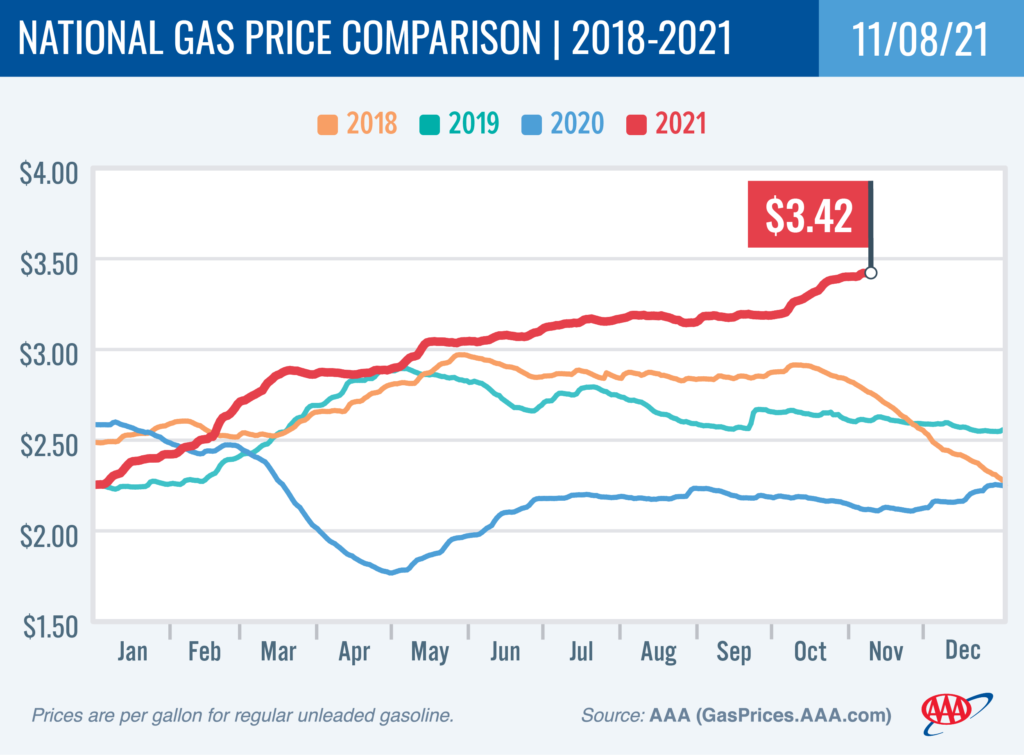
WASHINGTON, D.C. (November 8, 2021)—The price at the pump continued its slow climb, rising two cents on the week, with the national average for a gallon of gas hitting $3.42. For consumers, gasoline prices last hit this mark in September 2014, when “The Maze Runner” ruled the box office and Taylor Swift’s “Shake It Off” topped the pop charts. The latest decision by OPEC and its oil-producing allies to maintain their planned gradual increase in output will not help lessen supply constraints, so any relief will most likely have to come from the demand side.
“Not everybody loves changing their household clocks for the end of Daylight Saving Time,” said Andrew Gross, AAA spokesperson. “But the shorter days could lead to lower demand for gas. Drivers may head straight home from work to avoid the darkness rather than tack on side trips for shopping or errands.”
According to new data from the Energy Information Administration (EIA), total domestic gasoline stocks decreased by 1.5 million bbl to 214.2 million bbl last week. However, gasoline demand rose from 9.32 million b/d to 9.5 million b/d. The slight increase in demand has contributed to price increases, while elevated crude prices continue to put upward market pressure on pump prices.
Today’s national average of $3.42 is 16 cents more than a month ago, $1.31 more than a year ago, and 80 cents more than in 2019.

Quick Stats
The nation’s top 10 largest weekly increases: Michigan (+16 cents), Ohio (+14 cents), Indiana (+11 cents), Arizona (+7 cents), New Mexico (+5 cents), Illinois (+5 cents), Minnesota (+3 cents), Oklahoma (+3 cents), New Hampshire (+3 cents) and Texas (+2 cents).
The nation’s top 10 most expensive markets: California ($4.62), Hawaii ($4.33), Nevada ($3.95), Washington ($3.87), Oregon ($3.77), Utah ($3.72), Alaska ($3.71), Idaho ($3.69), Washington, D.C. ($3.61) and Illinois ($3.60).
Oil Market Dynamics
At the close of Friday’s formal trading session, WTI increased by $2.46 to settle at $81.27. Although crude prices gained for the day due to a weakening dollar, crude prices mostly declined last week after EIA reported that total domestic crude supply increased by 3.3 million bbl to 434.1 million bbl last week. However, according to EIA’s data, the current storage level is approximately 10.4 percent lower than the same time the previous year. A tighter oil supply has helped to keep crude prices above $80 per barrel. This week, crude prices could decline again if EIA’s next weekly report shows another increase in total domestic supply.
Motorists can find current gas prices along their route with the free AAA Mobile app for iPhone, iPad and Android. The app can also be used to map a route, find discounts, book a hotel and access AAA roadside assistance. Learn more at AAA.com/mobile.
###
